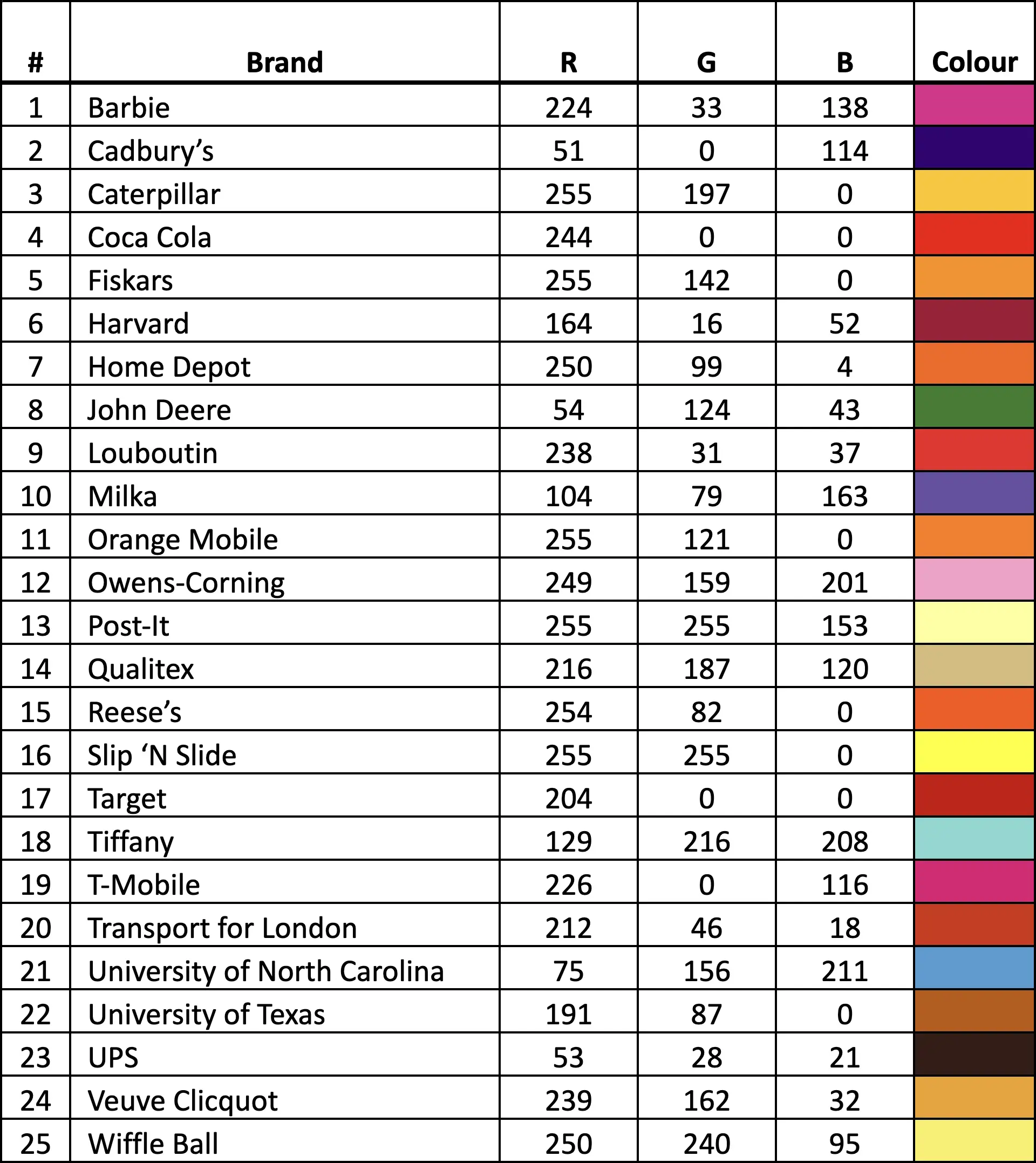


|
||
|
||
In my recent article on mark similarity measurement, I discussed a possible framework for protecting colour marks. The framework involves the specification of each colour according to its RGB (red-green-blue) specification (in which each component is expressed as an integer value between 0 and 255), with the suggestion that the protection afforded by a colour trademark could incorporate not only this exact colour, but also all similar colours around it up to a certain ‘distance’ (i.e. difference in RGB values) in colour space1—essentially, defining the trademark protection as a ‘bubble’. Furthermore, I suggested that a maximum threshold (d) of up to around 10 RGB units might be appropriate, which would set an upper limit of around 4,000 distinct colours which could be protected, if the ‘bubbles’ were not to be permitted to overlap.
If a framework as described above were to be adopted, it would make sense to maintain a database of protected colour marks, in which each colour was specified according to its RGB definition. This would allow the distance between each pair of colours to be specified, providing a structure which could easily be expanded to determine whether (a) a disputed colour fell under the umbrella of protection of an existing mark, and (b) a new mark application was sufficiently far away from an existing protected colour to be registrable (presumably, only relevant if the goods and services classifications overlapped).
A mock-up of how this may look in practice is outlined below. The database is constructed using information relating to protected colour marks (or colours featured as components of the definitions of more complex marks) for a number of brands, using either their exact RGB specifications if available, or approximations otherwise.

Once the database has been constructed, it is then a relatively simple matter to construct a matrix showing the separation distance (in RGB units) between each pair of colours. This is shown in Figure 1, whereby a darker shade illustrates a smaller distance (i.e. colours which are more similar). This approach could also be used to illustrate whether a particular pair of colours were closer than any specific protection ‘threshold’, as part of the assessment for a dispute, for example.

It is therefore possible to see (for example) that the most similar pair of colours in this dataset is #7 (Home Depot; [250/99/4]) and #15 (Reese’s; [254/82/0]), separated only by an RGB distance of 18 (albeit in distinct product classes). Quantifiably the most distinct are Cadbury’s purple (#2; [51/0/114]), and Slip ‘N Slide yellow (#16; [255/255/0]), with a separation of 346 RGB units (out of a possible maximum of 442; the difference between black and white).
The framework presented in this article would make it straightforward to maintain an archive of protected colour trademarks, and would provide a simple means of determining the similarity of any arbitrary colour to those already present in the database. If combined with case law specifying a protection ‘threshold’, it would then be possible to determine quickly whether any colour might potentially infringe any existing protection in place. Realistically, we would expect any such protection only to apply within the relevant class(es) of goods and services, and therefore it would probably make sense for a separate (or, at least, separatable) database to be maintained for each distinct class. This type of approach would greatly assist with the issue of resolving colour mark disputes and building an objective and consistent basis for case-law development.
Sponsored byIPv4.Global

Sponsored byVerisign

Sponsored byVerisign

Sponsored byRadix

Sponsored byCSC

Sponsored byWhoisXML API

Sponsored byDNIB.com
